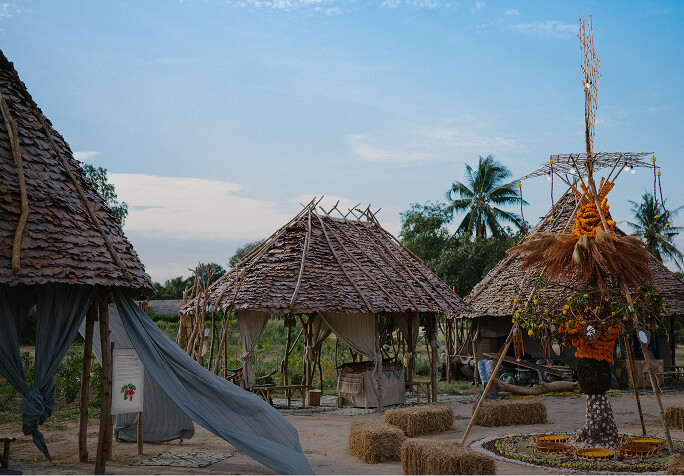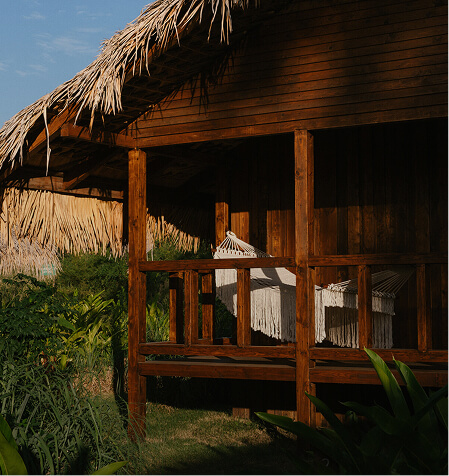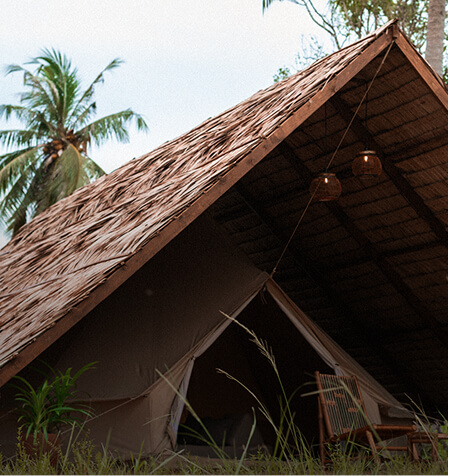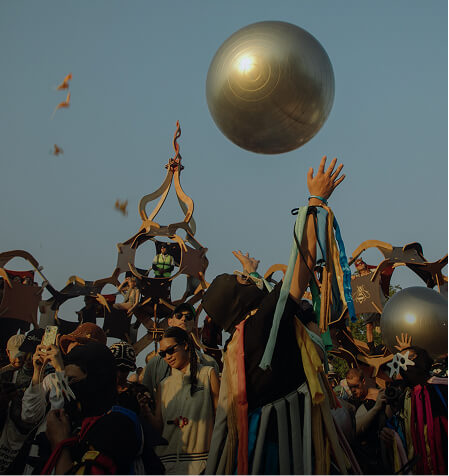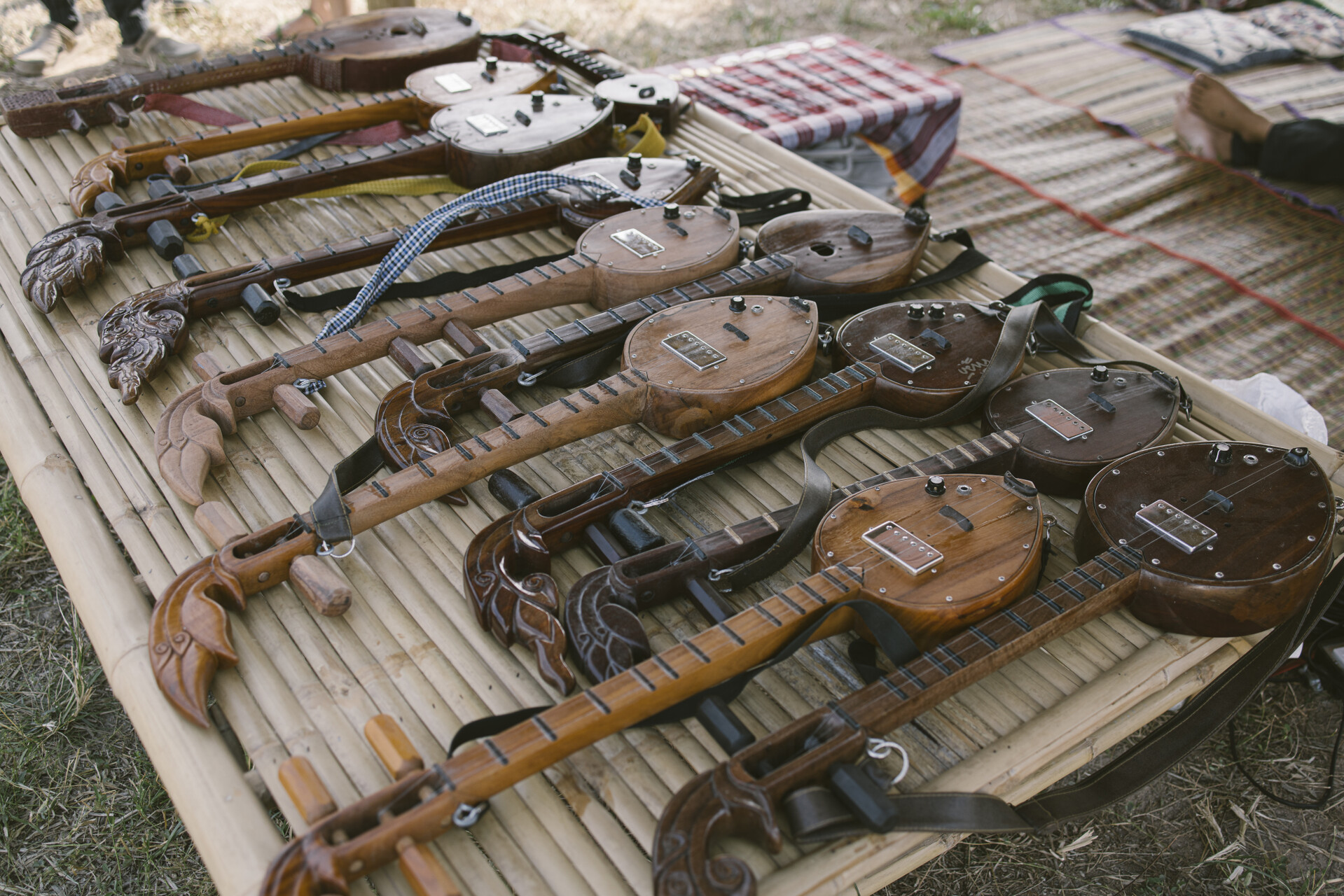
The instruments of Molam music
Category
Sound
Published
Wednesday, 9 July 2025
Last Updated
Wednesday, 16 July 2025
Melancholic, witty, sometimes raunchy enough to be banned from the airwaves, Molam music has been a part of Wonderfruit from our second year in The Fields.
Molam’s musical tradition predates the border that divides its place of origin and has branched out into several styles. Over the past century, Molam migrated down towards Central Thailand alongside people seeking work in urban areas, picking up different characteristics and stories along the way.
In honor of Molam, we’ve put together a non-exhaustive list of the instruments used to make its iconic sound.
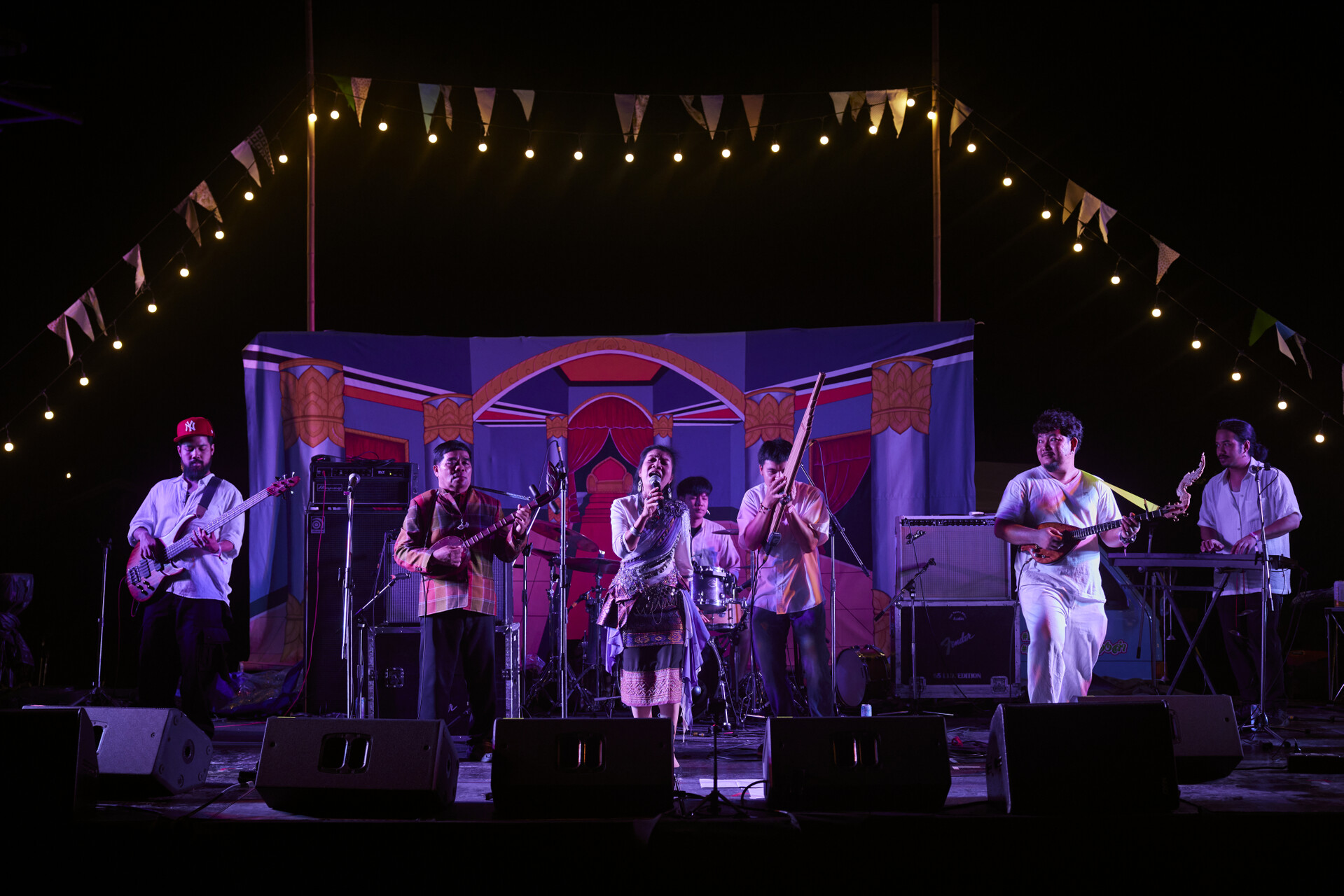
The core elements of Molam
หมอลำ (the storyteller)
The foundational instrument of Molam is the voice of the storyteller. ‘Molam’, roughly translated, means expert in poetry, song and dance. Some bands will forgo a singer entirely (for example, the Paradise Bangkok Molam International Band), yet the root of the musical tradition remains in the person who tells the stories handed down from generations before.
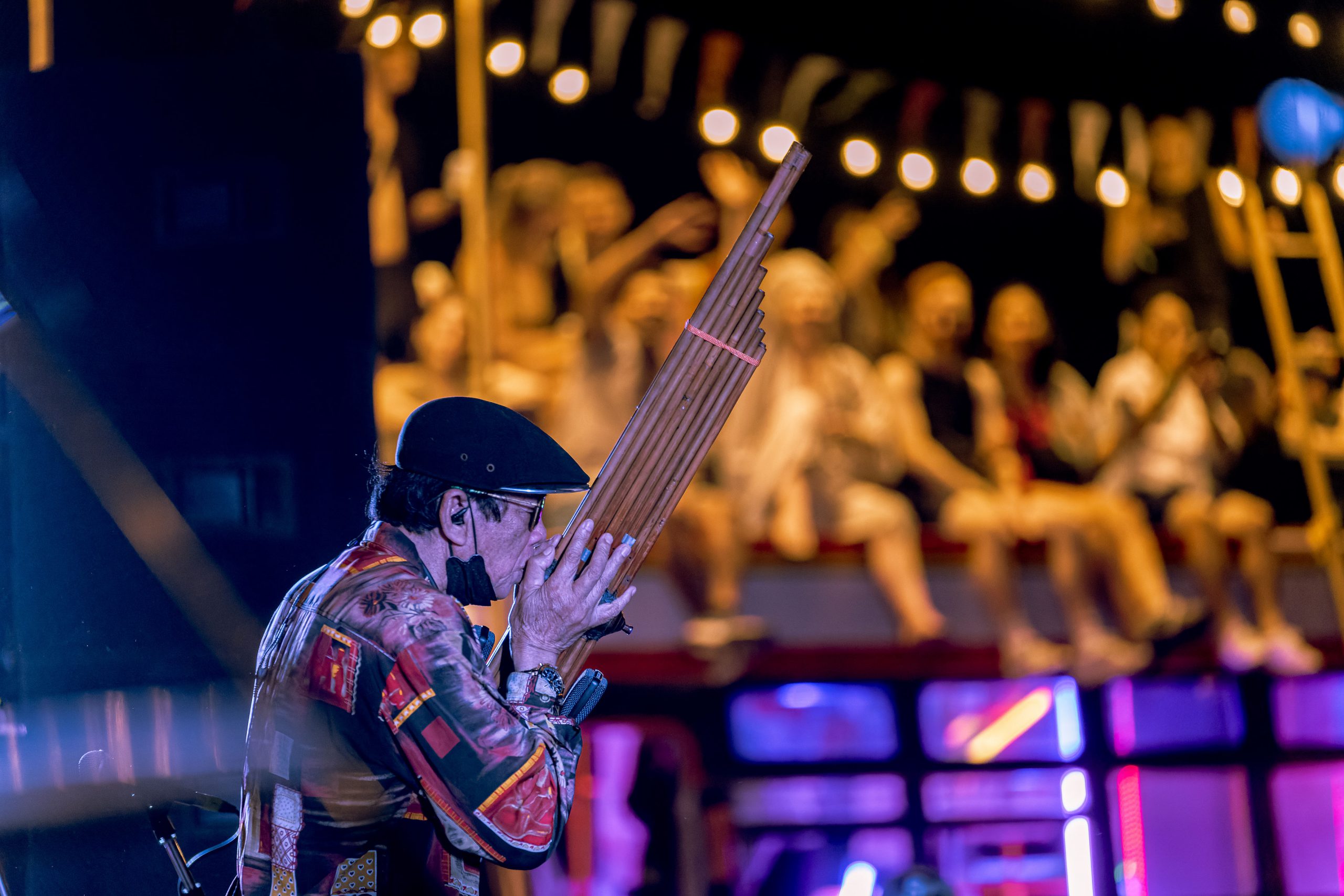
แคน (the khaen)
The khaen is a bamboo mouth organ, with pipes connected to a hollowed-out hardwood reservoir. With this polyphonic instrument, master khaen players can create rich, expansive sounds with overlaying melodies. Often, a Molam song will begin with just the khaen and the singer’s long, sustained vocalizations, allowing the khaen to adjust to the singer’s key.
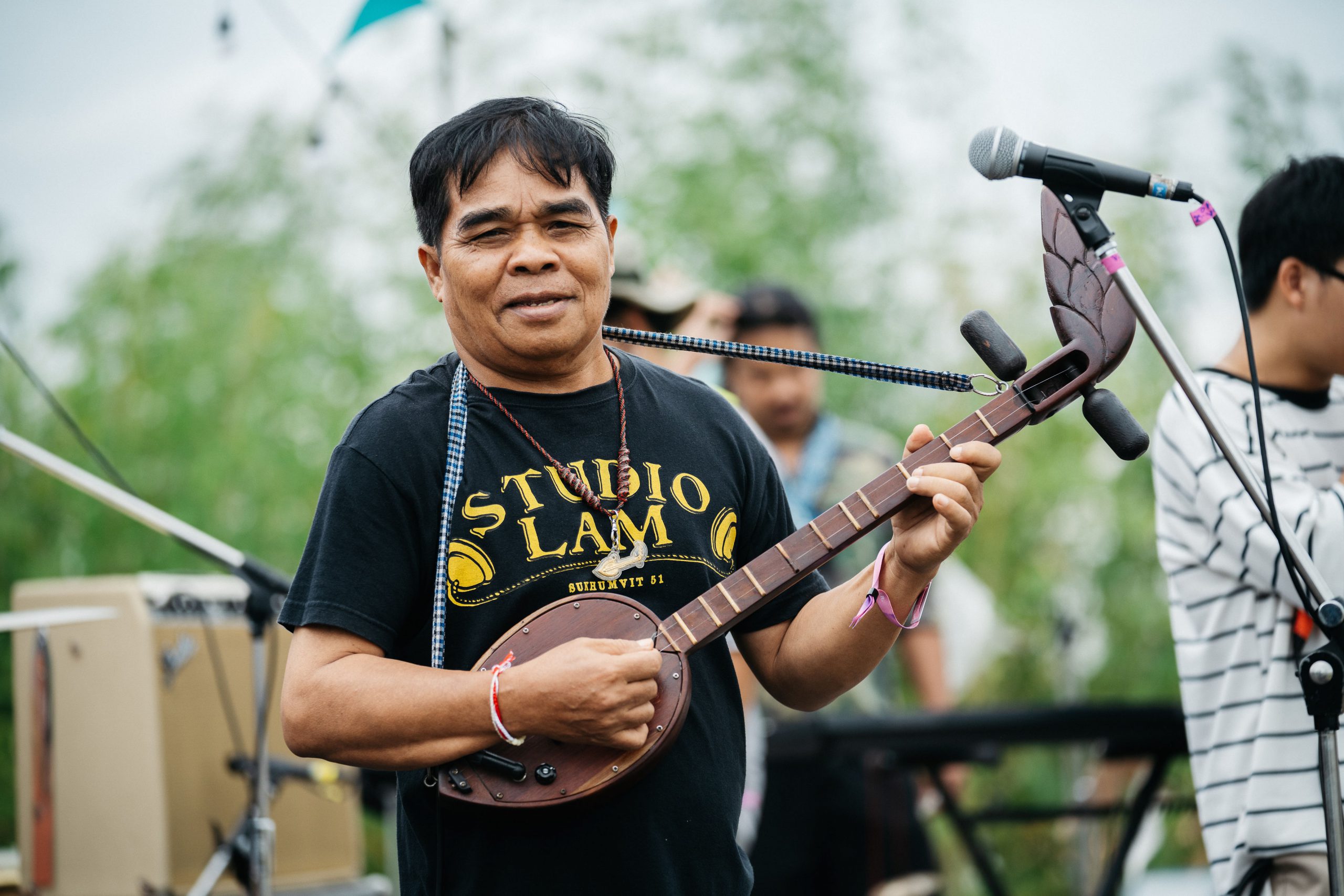
พิณ (the phin)
The phin is a three-stringed lute carved from a single log. Traditionally acoustic, most modern bands will use an electric phin—which is said to have first been invented by the late Ajarn Thongsai Thap Thanon, Thailand’s phin maestro.
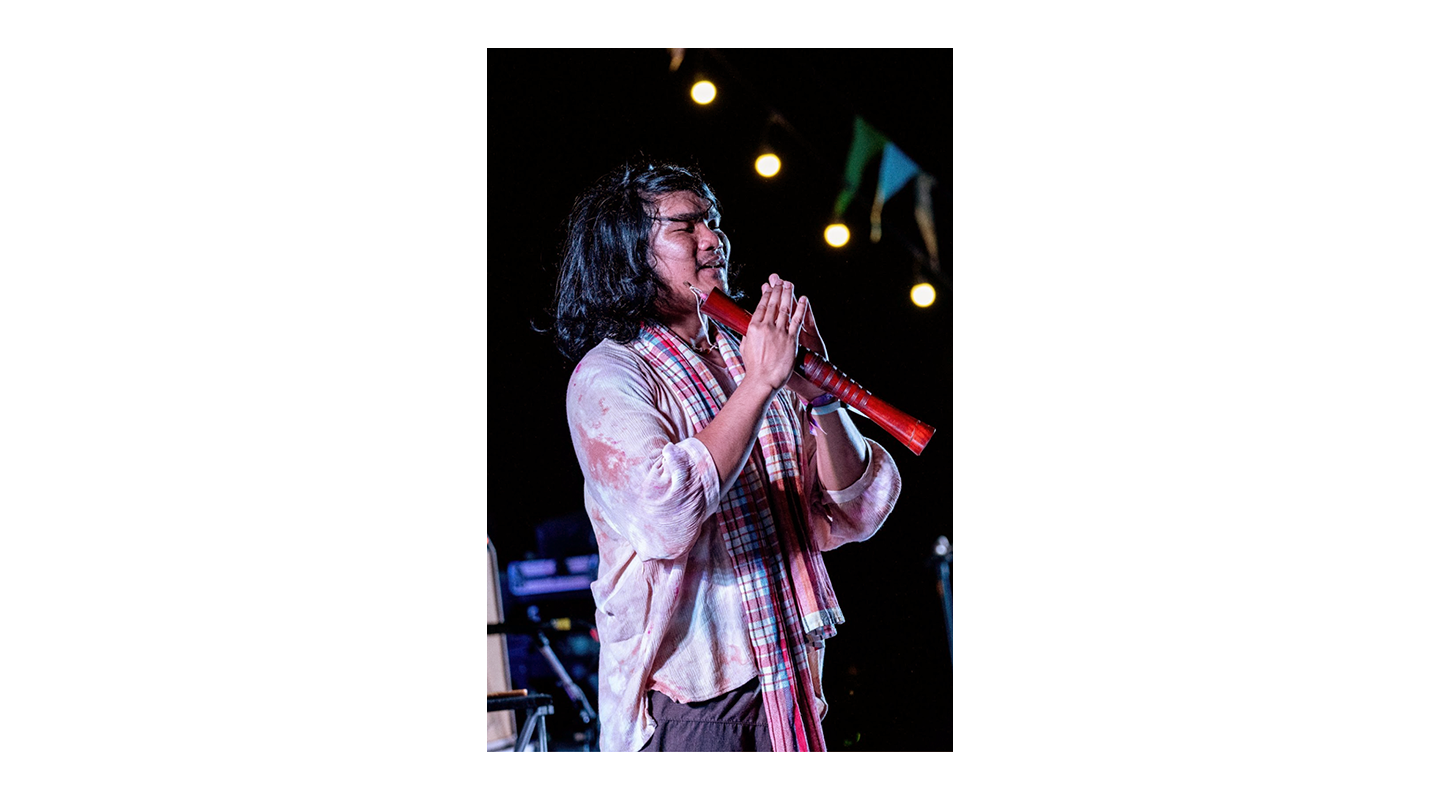
Other Thai instruments you might hear in Molam
ปี่ (the pi)
The pi is a four-reed wind instrument with six finger-holes, used widely in central Thai classical music. You’ll also hear the pi in Piphat orchestras and accompanying Thai classical dance.
ขลุ่ย (the khlui)
The flute-like khlui is another common Thai wind instrument. It’s often made from bamboo, rosewood or tamarind and is played vertically.
โปงลาง (the pong lang)
The pong lang is a hanging wooden xylophone from the Isaan region, played with two hardwood mallets and a prominent feature of Isaan Pong Lang ensembles. Unlike its Central Thai counterpart, the ranat, it isn’t strung over a box, but instead can be hooked from a post or tree, then to the player’s hip or toe.
โหวด (the wot)
Made from similar materials as the khaen, the wot is a circular panpipe. It’s played with the pipes facing downward, with the circular bottom resting against the player’s chin.
ซอ (the sor)
Much of Thai classical music is accompanied by the sor, a two-stringed fiddle. Like the cello, the sor’s cadence closely resembles the pitch of a human voice, allowing it to create a haunting, melancholic sound.
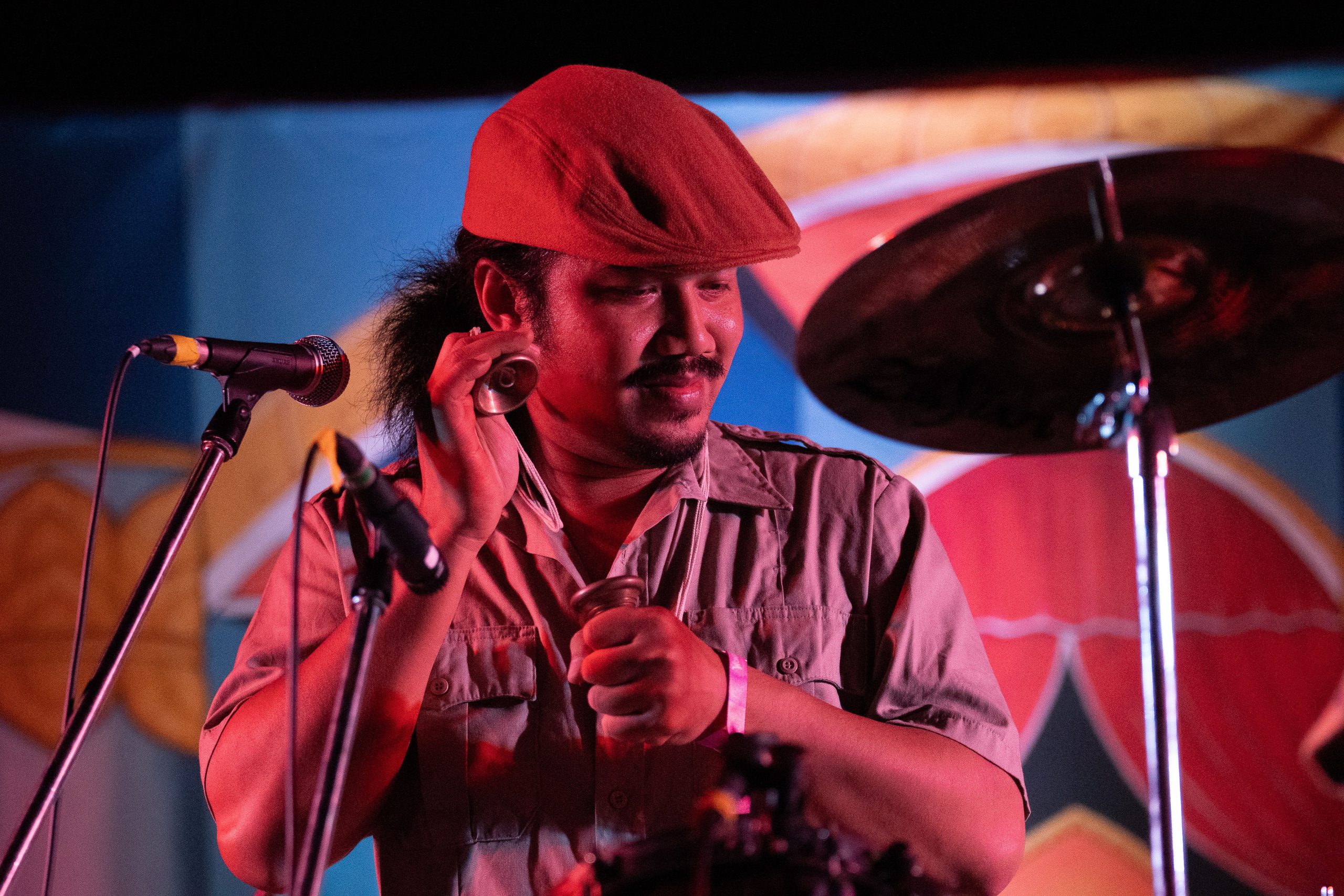
ฉิ่ง (ching)The sharp rhythms kept by the chings are the beating heart of almost all Thai music. Two small cymbals keep tempo, with the percussionist alternating between hitting the bell and the edge—creating the ‘ching-chap’ sound that gives the instrument its onomatopoeic name.
กลองหาง (klong hang)Klong hang are also known as klong yao Isaan, or Isaan long-drums, which are played with linear drumming techniques to produce the traditional Molam drum fill. The iconic four-beat or one-bar drum fill has bled through genres into the high-energy music that blares out at temple fairs and Songkran celebrations.
กรับ (krap)The krap is a percussion instrument used across Southeast Asia, made from two pieces of wood or rectangular concussion sticks that are clapped together.

An international sound drawn from Western influences
During the Cold War, Western contemporary music made its way into Thailand in the luggage of traveling soldiers, reporters and other travelers. Influences of jazz, rock and roll, blues and heavy metal drifted from army camps, landing in Molam.
Adding the contemporary drum set allowed a single percussionist to reproduce a whole range of polyrhythmic beats. The electric guitar and electric bass are now a staple of most Molam music, blending classic riffs with the Isaan scales.
Some bands added brass for brightness—swapping out the pi and khlui for the trumpet and trombone. Others embraced the soprano saxophone, creating a unique playing technique that intermingled the improvisations of jazz and classical Thai techniques, while others added the electric organ.
In the 80s and 90s, popular Molam artists also added more electric keyboards and synths, looping rhythmic tracks and other instruments influenced by the influx of pop music. At Molam World, you can hear everything from the traditional to electric-inspired performances—yet all branching from the same root.



